Garmin has announced the new Instinct 3 Tactical edition, which comes in two flavors: AMOLED & SOLAR (to match the two flavors of the main Instinct 3 lineup that launched a few months ago). Garmin’s tactical-themed watches have been around a number of years now, first starting with the Tactix in 2013 (essentially a variant of the Fenix), and then in the last few years spread to the Instinct lineup.
These watches take their base watch, and then change it in two main ways:
A) They slightly tweak the display, and flashlight for more night-optical/vision friendly options
B) They add additional features targeted at military and hunting scenarios.
Plus, they sometimes have camo exteriors, though this Instinct 3 Tactical merely goes with black. Here’s the pricing of the Instinct 3 Tactical:
– Instinct 3 Tactical AMOLED: $599 for the 50mm
– Instinct 3 Tactical SOLAR: $499 for the 45mm, and $549 for the 50mm
These are essentially $100 price increases over the existing Instinct 3 50mm editions:
– Instinct 3 AMOLED: $449 for the 45mm and $499 for the 50mm
– Instinct 3 SOLAR: $399 for the 45mm and $449 for the 50mm
Garmin says the new Tactical units will start shipping from April 30th.
Changes Compared to Instinct 2/2X Series:
If you’re not familiar with the Instinct 3 that launched back in January, check out my in-depth review from back then. What’s important to know is that as part of the Instinct 3 launch, they split the lineup into two display types: AMOLED & MIP. The MIP based option is akin to the older Instinct watches displays, except much more clear. Additionally, Solar is included/only on the MIP based displays (not available on AMOLED).
The Instinct 3 received the Gen4 optical HR sensor, an upgrade from the previous Gen 3 on the Instinct 2 lineup, but lacks the more current Gen5 optical HR sensor found on numerous other Garmin watches. This means the Instinct 3 editions (including Tactical) can’t do/have any ECG features.
The Instinct 3 gained an absolute boatload of features, especially in the sports profiles department, as well as other health/fitness metrics. Essentially it brought even closer to some mid-range Forerunner watches, and slightly older Fenix watches. However notably it did not gain any offline mapping capability. Yes, you can still follow routes, but those routes will not have maps – a major omission considering most of their competitors now have this at half the price.
In any case, as a quick reminder, here’s the core Instinct 3 vs Instinct 2 differences (before we get into the Tactical-specific differences):
– Added AMOLED display option
– Increased solar charging power by 5x compared to Instinct 2 Solar
– Added flashlight to all units
– Increased display sizes for AMOLED units (Solar is same)
– Ditched secondary display window on AMOLED, but kept it on Solar
– Increased contrast by 2x on Solar editions (versus Instinct 2)
– AMOLED Display Size: 50mm is 1.3” display
– Solar Display Sizes: 45mm is 0.9” display, 50m is 1.1” display
– Added metal ring into bezel as “reinforcement”
– Added multiband/dual-frequency GNSS/GPS to all units (Instinct 2X had it)
– Added Garmin’s SatIQ feature to all units (a big deal for battery)
– Added Training Load Focus
– Added Training Load Ratio
– Added Multisport/Triathlon Auto Transition
– Added Nap Detection
– Added Sleep Coach
– Added Muscle Map for Strength Workouts (AMOLED only)
– Added Strength Workout Animations (AMOLED only)
– Added Garmin Share
– Added Garmin Messenger compatibility
– Added Garmin Pay as standard on all units
– Added large font mode, AMOLED only (introduced on other Garmin units recently)
Again, I outline all those new features in my post here on the Instinct 3 in much more depth.
How the Instinct 3 Tactical Differs – Hardware:
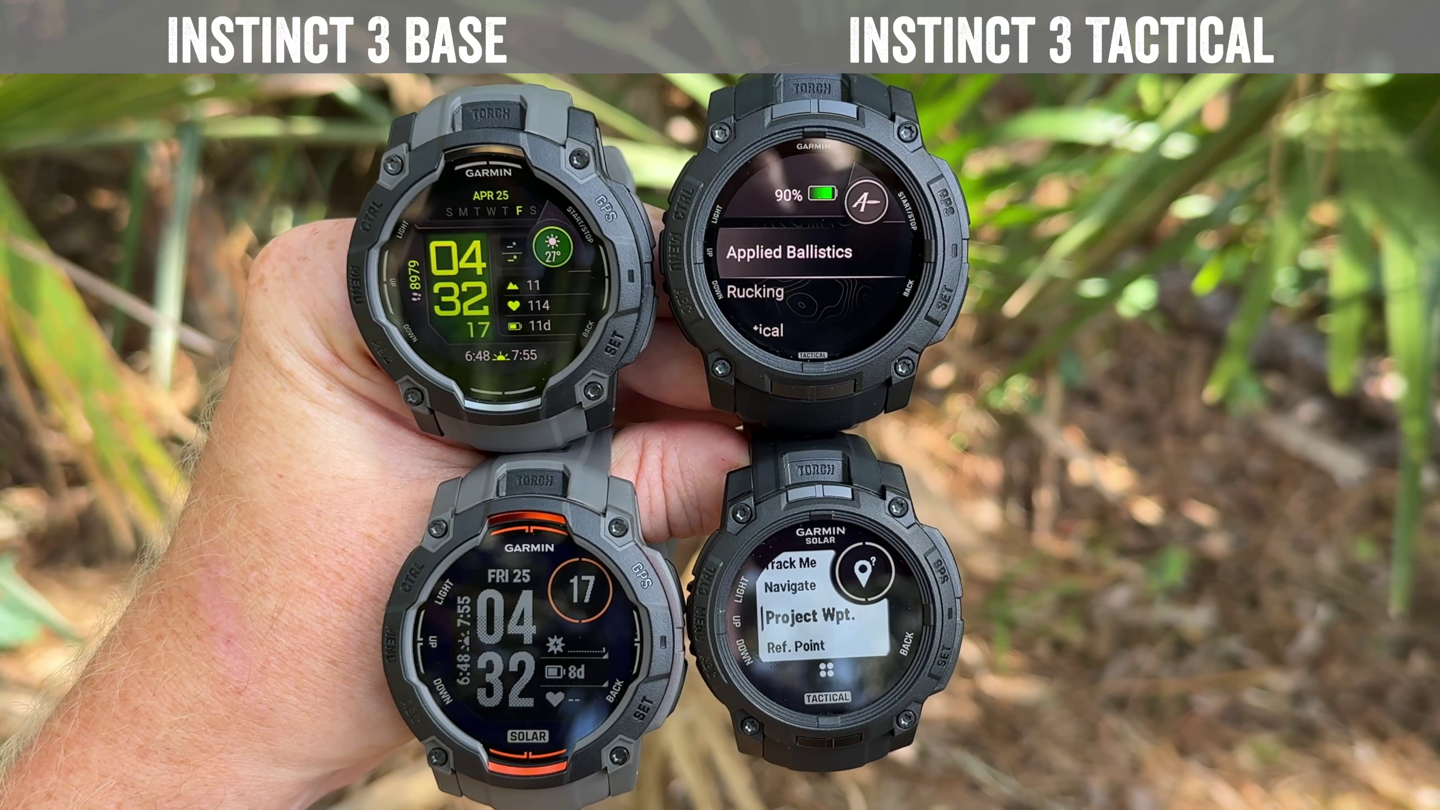
As noted above, the first way the Instinct 3 Tactical differs from the base Instinct 3 editions is in the hardware itself. While the core of the unit is the same (same optical HR sensor, same 50mm case sizes, same Garmin Pay, same multi-band GNSS and seemingly same processing aspects, same 100m water resistance rating), there are some notable differences:
– AMOLED offered only in 50mm, but SOLAR in 45mm & 50mm
– Uses a dual white/green LED flashlight (versus white/red LED flashlight on base Instinct)
– Very slight component differences that feed into the display, to handle the night shift dimming aspect, but the display itself is identical.
– Only available in 50mm editions (versus dual 45mm & 50mm editions on base Instincts)
Here you can see the green flashlight, as opposed to the red flashlight of the regular Instinct 3 models:
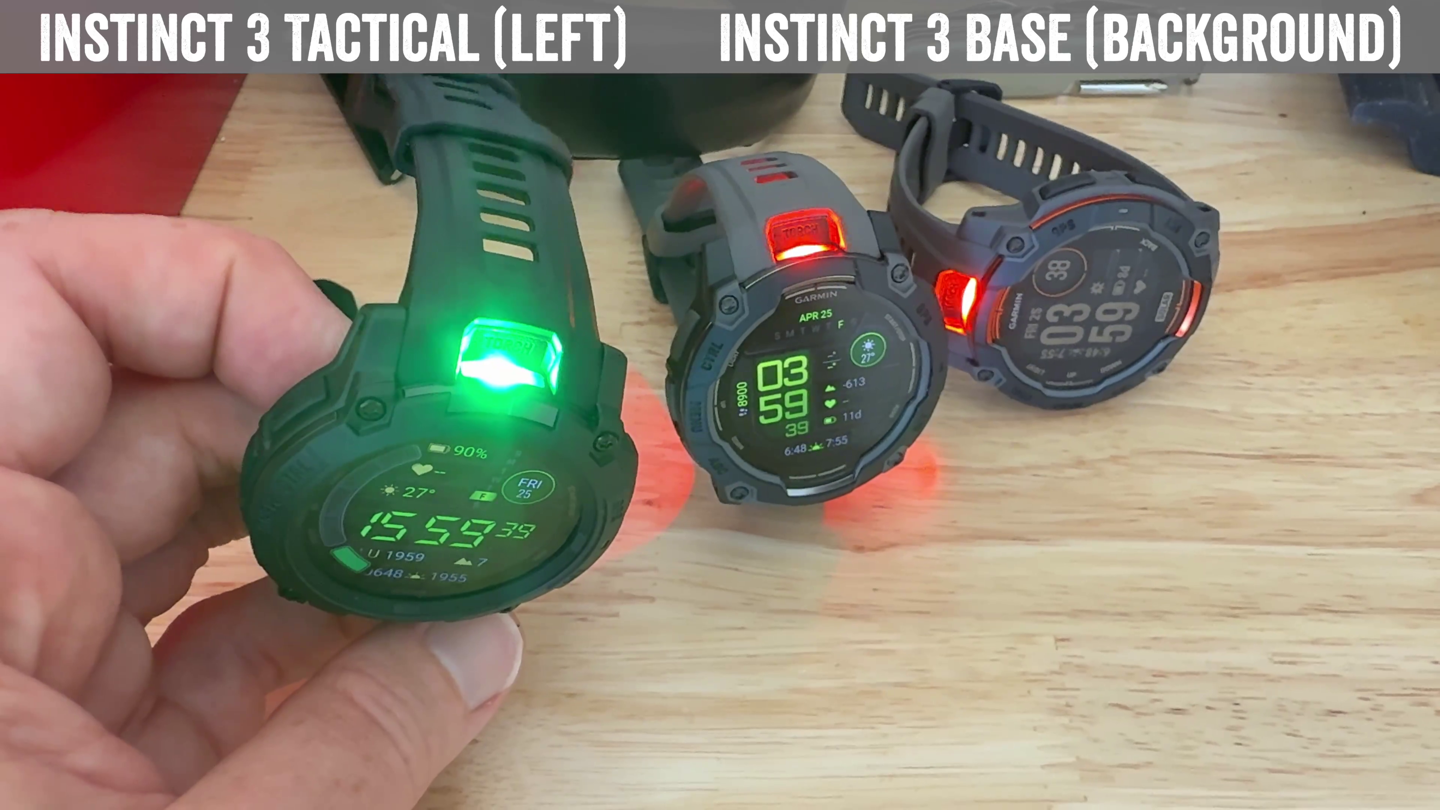
They are otherwise identical in every aspect to the Instinct 3, including both having a metal-ring reinforced bezel (the bezel isn’t metal, just a ring inside of it), and all weights/sizes are identical. Again, this is literally the same case, just a different display and flashlight. There isn’t even a camo color scheme this time around, though, all black is the new black anyways.
How the Instinct 3 Tactical Differs – Software:
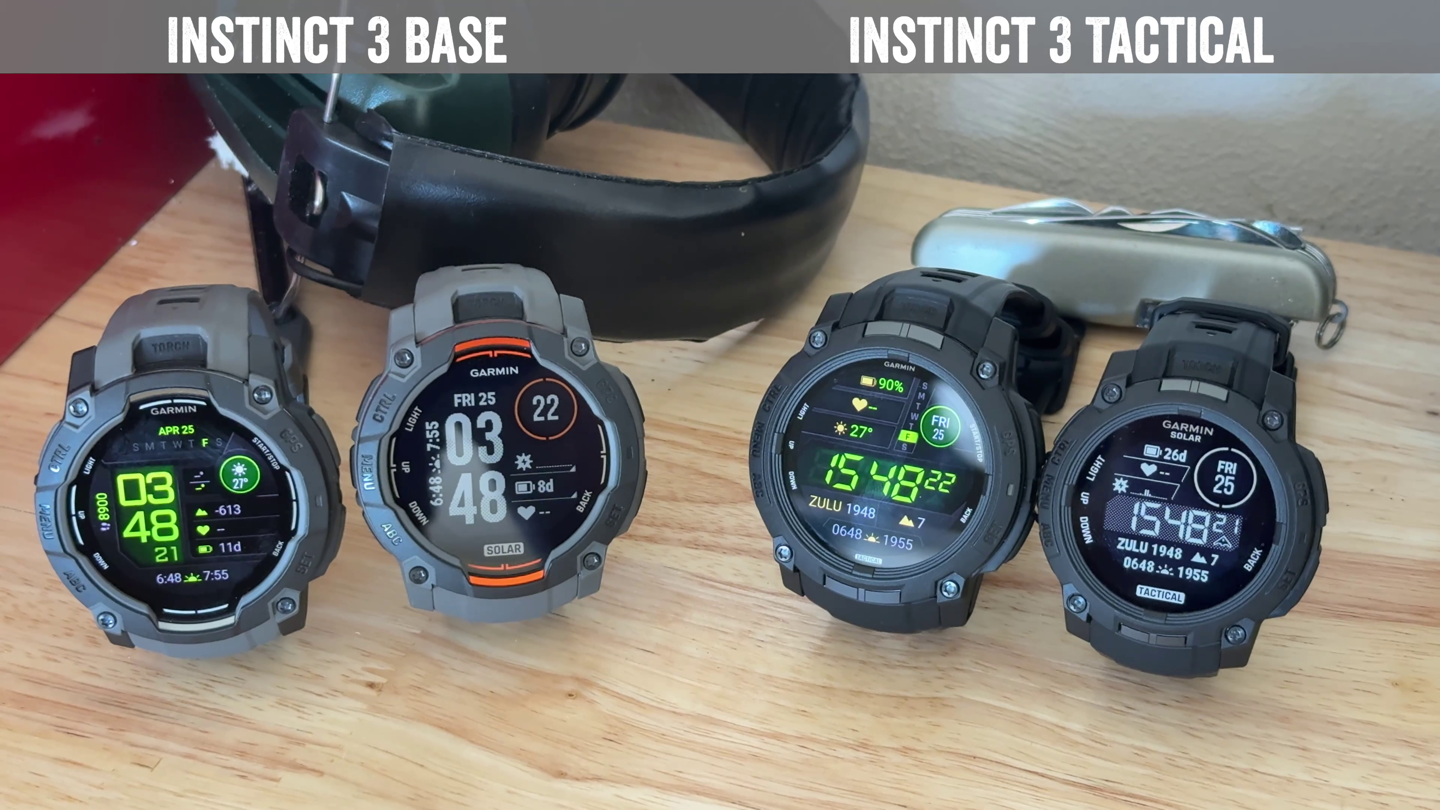
With the hardware bits out of the way, let’s talk software differences. This section is notable because while almost all of the features are free, one software component in particular requires a paid unlock (as it did in the past, but isn’t required for the much higher end Tacitx 8 models, more on that in a second).
All of these are unique to the Tactical models, and are not on the base Instinct 3 models:
– Night Vision Mode: This mode changes the display so that it is in a dimmed green-only state (AMOLED) that is NOD/NVG friendly. For the MIP/SOLAR edition, it disables the backlight, but given its monochrome, there is no green. Now, if your NOD is set at a focus distance of your wrist (roughly), it’ll work perfectly fine there. So from a Garmin perspective, they did their job. However, do keep in mind that if you have your NOD focal plane set to a more practical distance of 5/10/15m/etc, then your watch will be out of focus and unreadable. You could change the diopter to be focused at your watch distance, but that’d be a bit fiddly. This quick video does a great job explaining the tradeoffs, including how to read the time with NOD without the Night Vision Mode enabled.
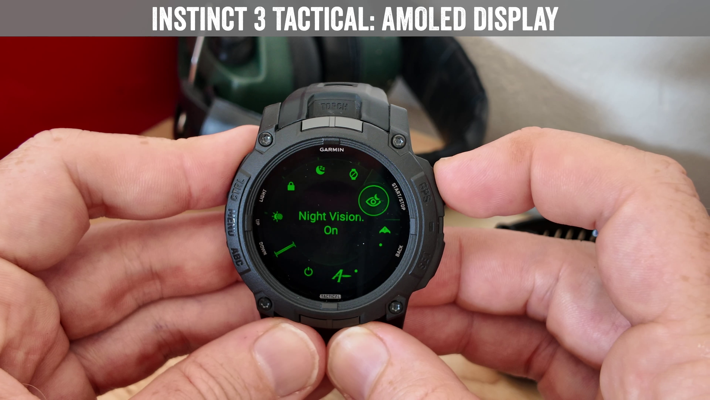
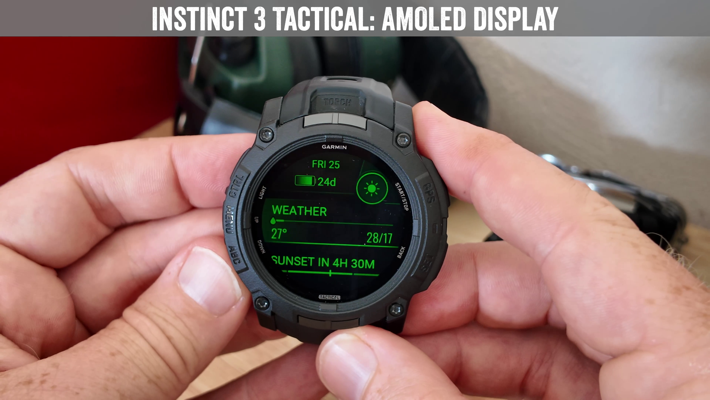
– Stealth Mode: This feature turns off all connectivity features, including Bluetooth & GPS (there’s no WiFi on the Instinct 3 lineup). The idea being to prevent any broadcasting of position (even a passive Bluetooth signal could be easily detected). That said, this doesn’t typically qualify for usage in classified spaces (e.g. SCIF), given how easy it is to turn back on.
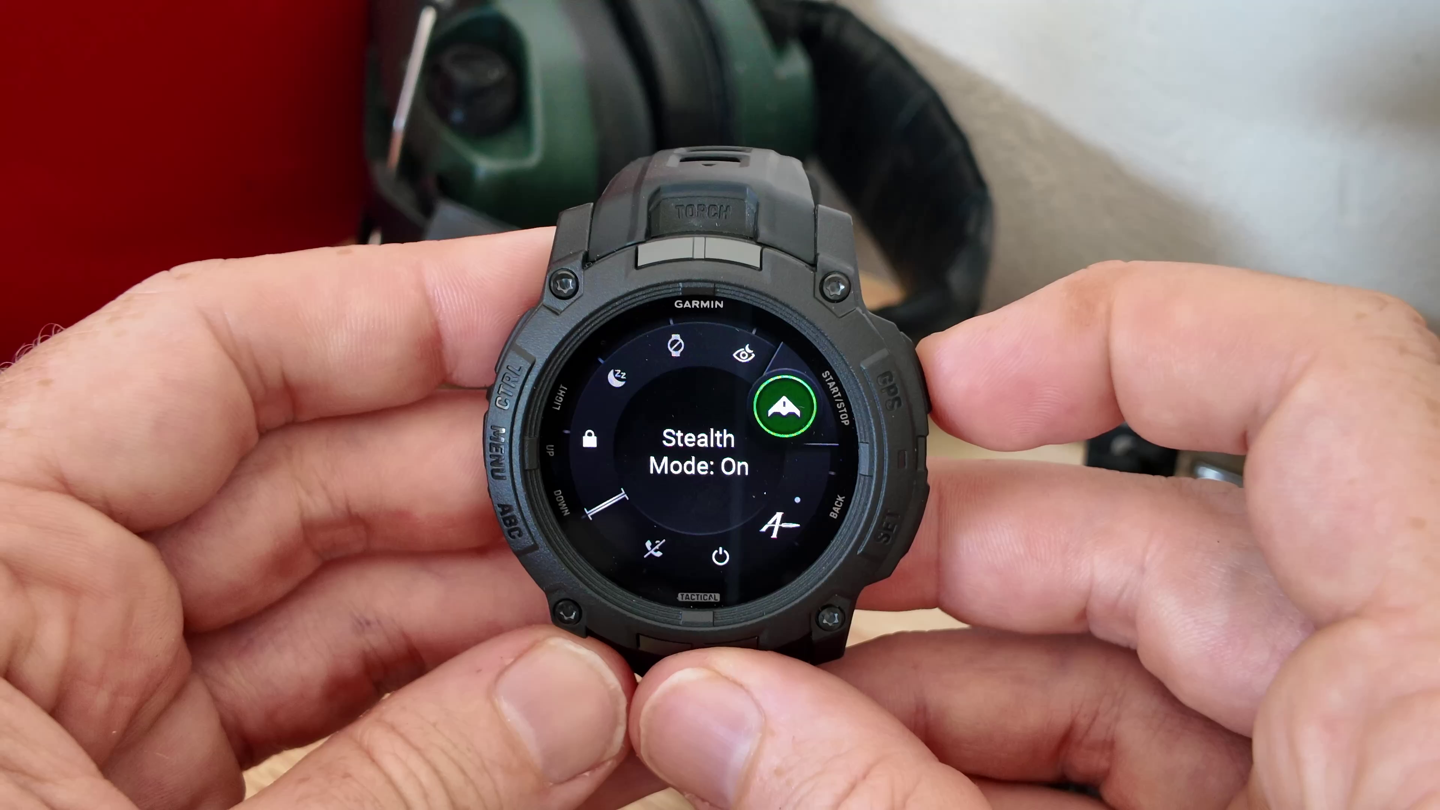
– Kill Switch: This feature is advertised as a quick way to delete the content off the device. And yes, it does that. However, I certainly wouldn’t trust it to do it in a way that a state-level actor couldn’t recover. For example, in my testing with the Instinct 3 Tactical and Kill Switch, I could manually place folders in the file system and they would be there after the Kill Switch, indicating it’s not doing any sort of fancy multi-pass wipe that is typically used half-hearted wipe scenarios (I demonstrate this in my video). It does delete the files themselves, but the fact that the folder remains, indicates this would’t likely handle more advanced software or hardware data recovery methods.
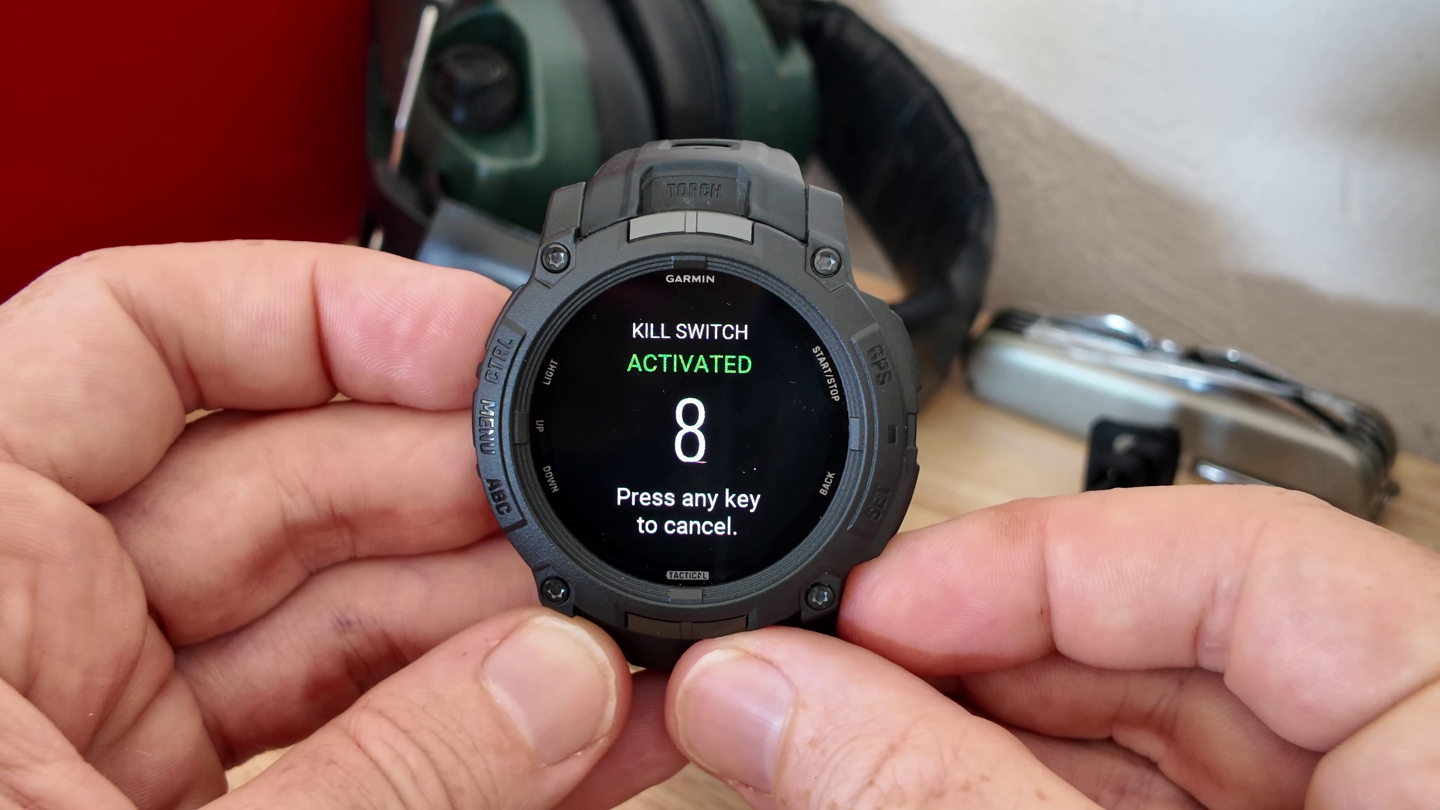
– Rucking Activity: This is quite new to Garmin altogether, and was recently launched on the Tactix 8, and then a few weeks ago on the Fenix 8. It simply allows you to specify the pack weight, though, it won’t impact calorie burn, as that’s accounted for via heart rate (in theory a higher pack weight would increase heart rate due to added strain).
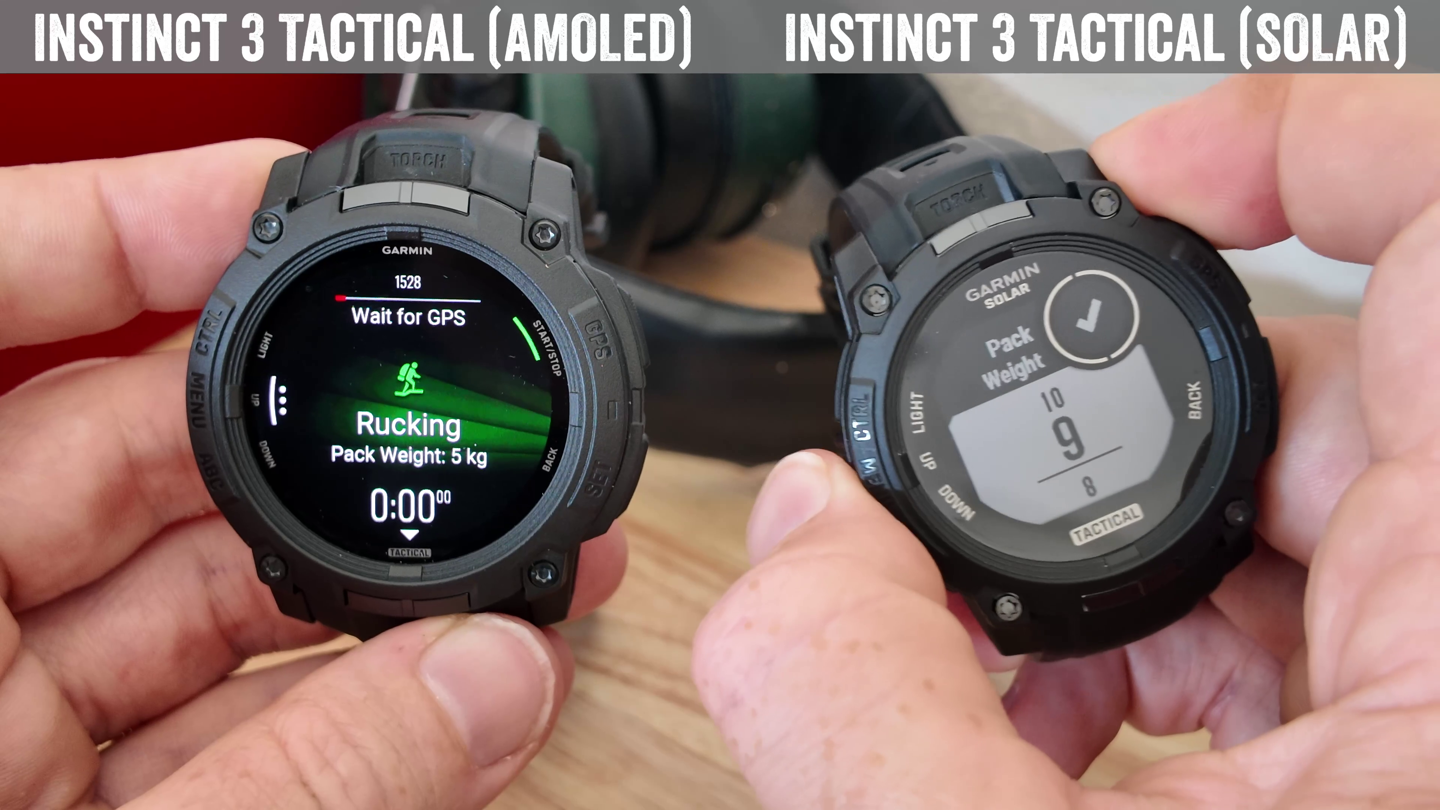
– Jumpmaster Mode: Jump out of a perfectly good airplane and plan, and track how well your body falls rightly back to earth. Specifically, this allows you to plan the drop including HAHO/HALO/Static types, with drop altitude, opening altitude, and DIP coordinates. Further, you can enter in wind information for accurate HARP calculations, as well as navigation to the DIP.
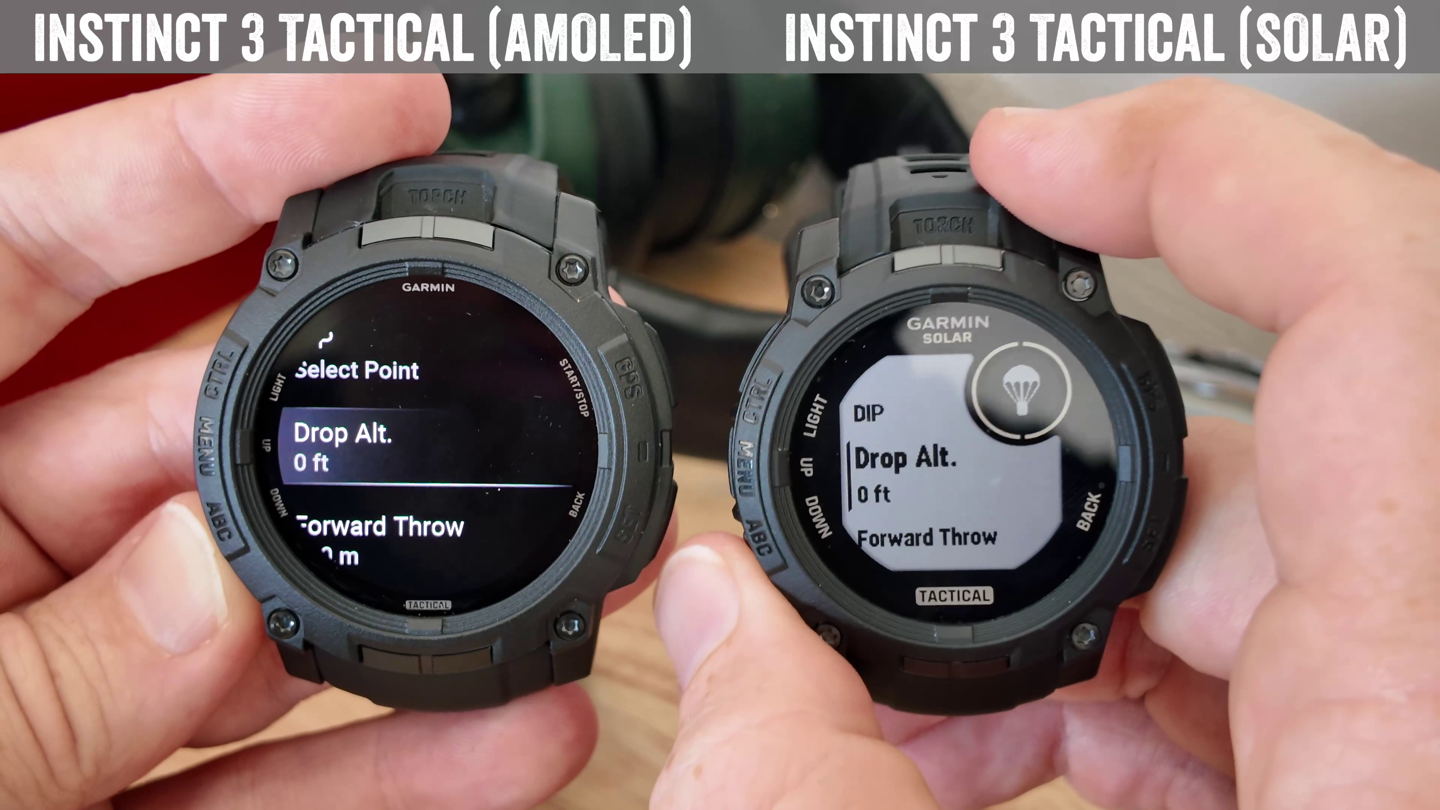
– Applied Ballistics Solver: This piece is loaded on the watch, but not unlocked. This allows for aiming solutions for long-range shooting. Additionally, it can load in environmental components (temperature) from an external. Garmin Tempe sensor when doing those calculations (it won’t use on-watch wrist-based temperature though due to heat interference) Unlocking on the Instinct 3 costs $100 or $300, depending on which features you want. Here’s the super-long chart from that page, broken into two pieces (Ultra Light on left column, Elite on right column):
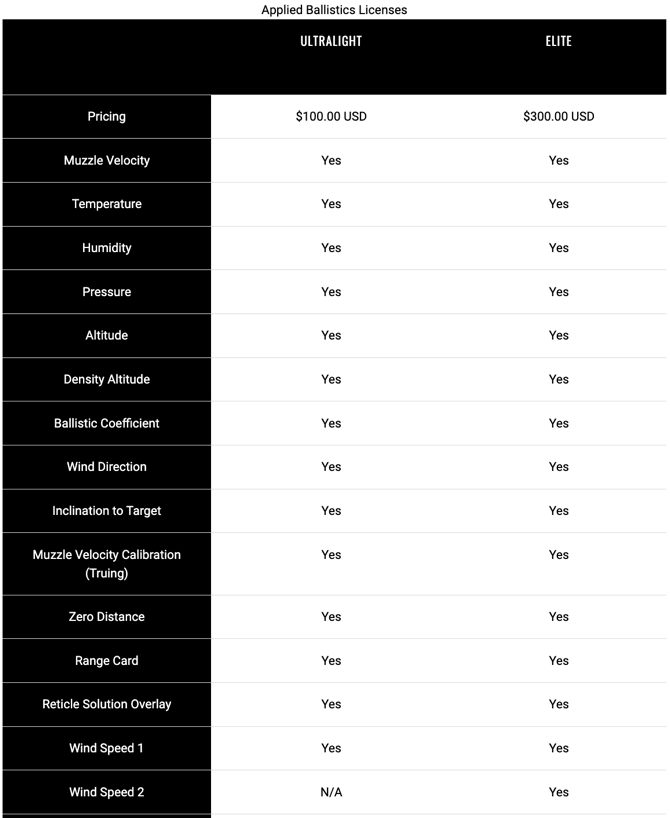
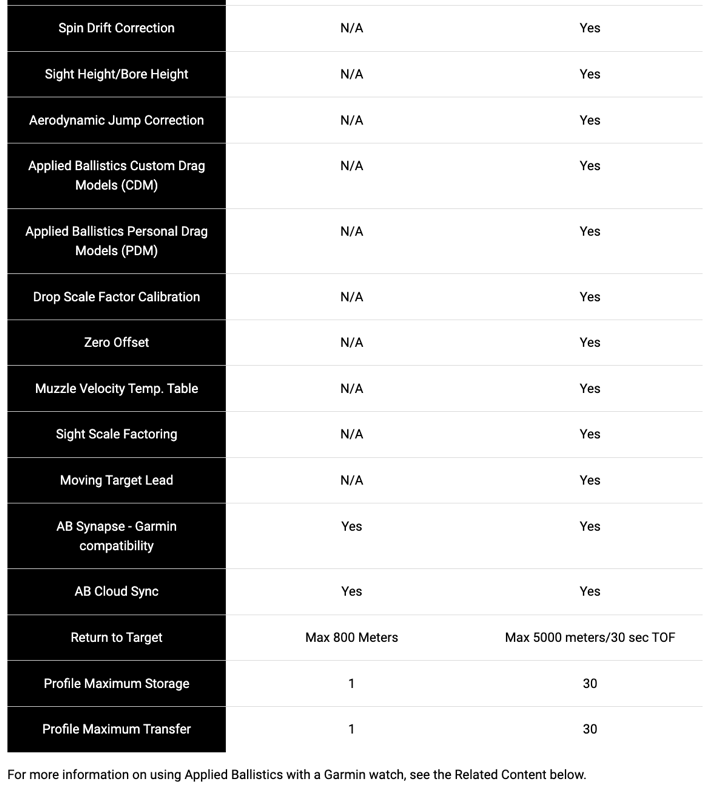
– AB (Applied Ballistics) Quantum App Integration: This is a phone & tablet based app from Applied Ballistics that can integrate with the Garmin Instinct 3 Tactical (and other compatible Garmin devices). Whereas the ‘solver’ piece in the previous bulletpoint is the portion that runs locally on the watch. This allows you to manage profiles & targets, as well as use your smartphone as an extended display.
– Instinct 3 Tactical Watchface: This does have a unique Instinct 3 Tactical watch face that isn’t found on the regular units.
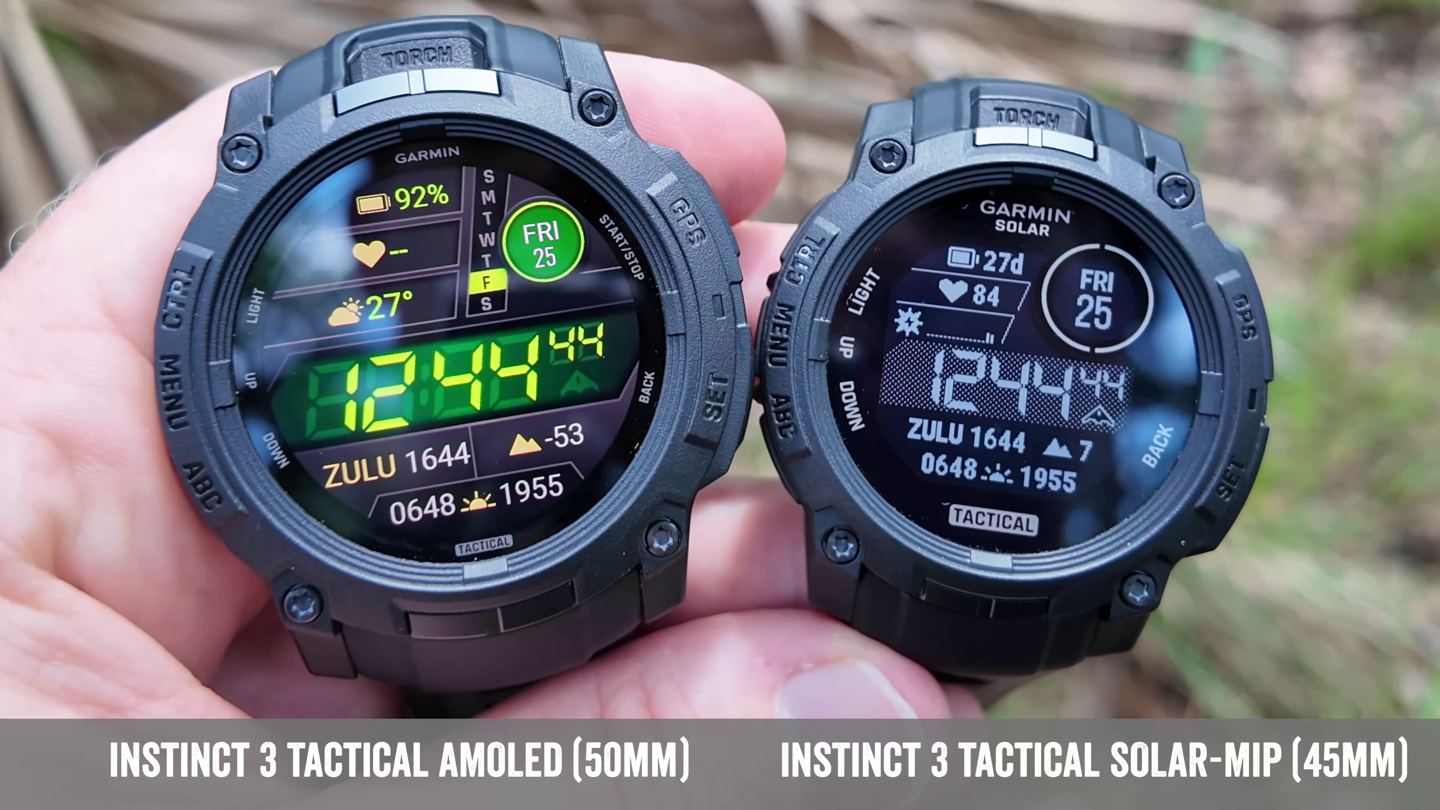
Now, that said, the base Garmin Instinct 3 units do have some tactical features already, specifically the base Instinct 3 (and previous) editions include:
– Dual Grid Coordinates: Shows coordinates in both MGRS and Lat/Long concurrently
– Xero Laser Location sensor integration: Pairs & integrates with Garmin’s Xero sights
– Project Waypoints app/feature: Sets a heading, along with a given distance, and tells you lat/long to said point.
– ’Tactical’ sport profile: Simply a hike-like profile with dual-grid as a default data display, along with elevation.
Point being, the above are often incorrectly listed as being unique to the Garmin Tactical/Tactix editions, but in reality, are not. Here you can see them on my base Instinct 3 editions:
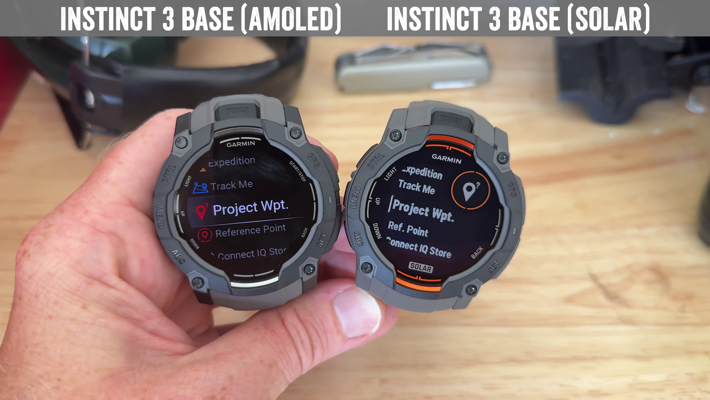
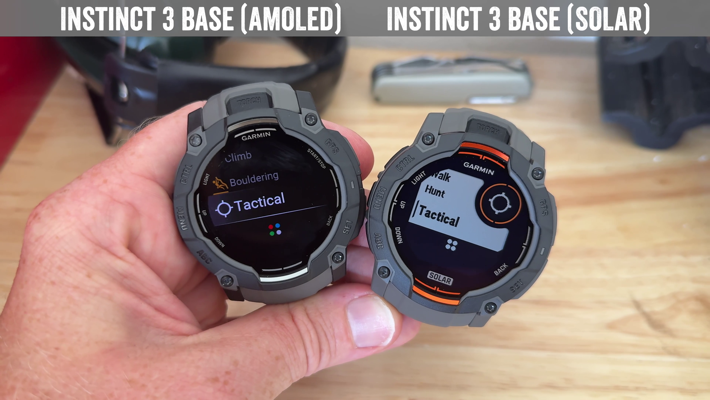
At this point, in a side-by-side comparison, there does not appear to be any additional sport profiles on the Instinct 3 Tactical compared to Instinct 3, aside from the Jumpmaster sport profile. In the past Garmin had differentiated a bit more, but that mostly ended in the Instinct 2 era.
Finally, for lack of anywhere to put it, as with the Garmin Vivoactive 6 that was recently released, there’s no element of the Garmin Instinct 3 Tactical that requires Garmin Connect+, and at no part in this post did I leverage it in any way.
Wrap-Up:
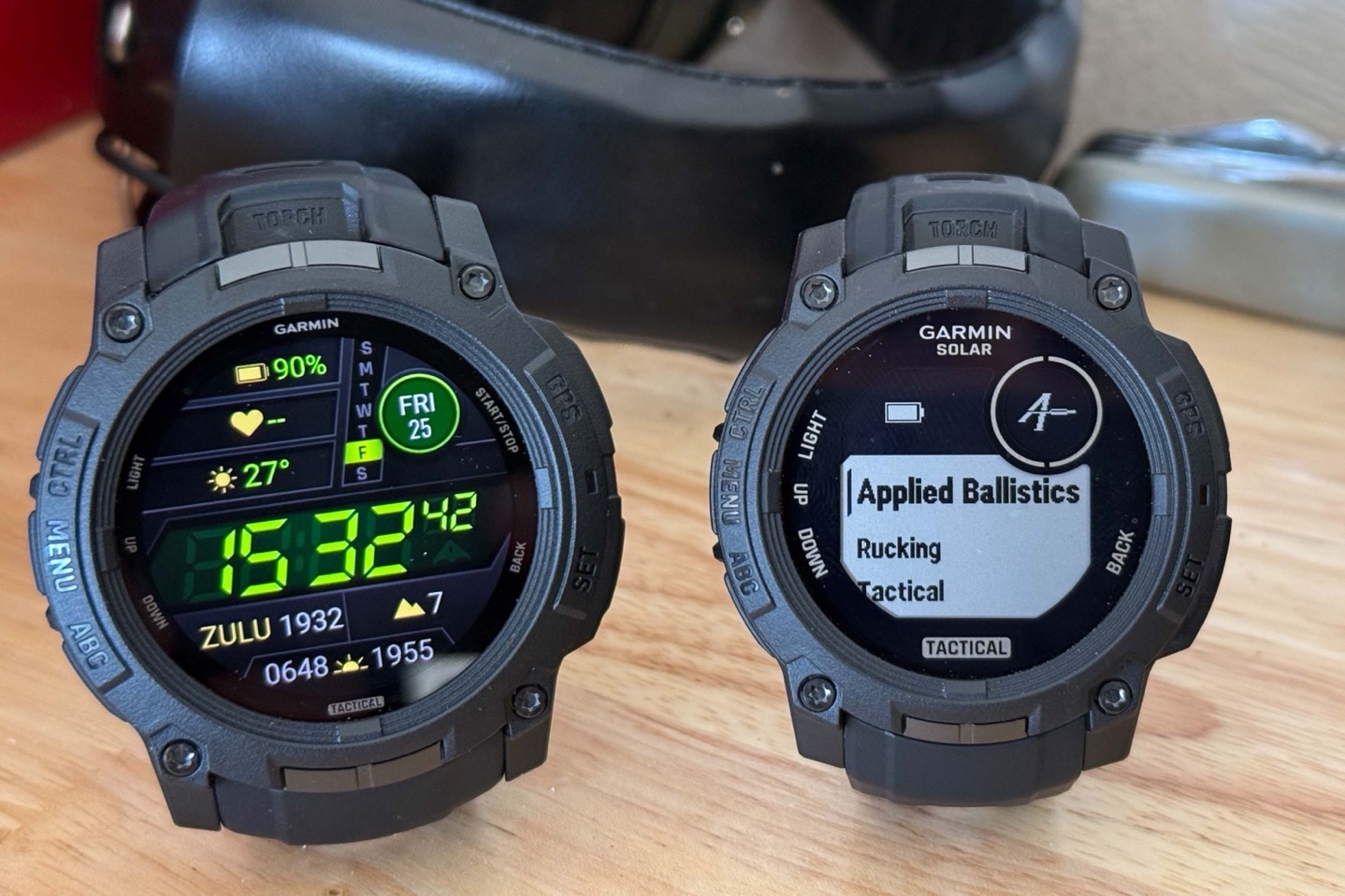
The Instinct 3 Tactical essentially follows the same mold as Garmin’s previous Instinct Tactical editions, by adding what is nearly the same Tactical-only features for a premium. When Garmin previously announced the Instinct 2X Tactical ($499) a few years back, that was at a $50 premium to the Instinct 2X non-tactical ($449). This time around, it’s at a $100 premium over the base models – that relative change in premium is virtually guaranteed to be due to expanded tariffs. Though, comparing Instinct 2X Solar to Instinct 3 Solar, it’s only a $0 or $50 increase depending on which size you choose. It’s the AMOLED that has spiked up a bit.
In any event, setting that aside, the Instinct 3 Tactical editions will fill the gap AMOLED-option created when Garmin announced AMOLED versions of the higher-end Tactix units a year or so ago. This now brings both display types to Garmin’s more affordable tactical variants.
Beyond that, they’re simple Garmin Instinct 3 units through and through. If the added tactical-focused features are your jam, and you were waiting for this edition – it has arrived. If you don’t need those features, than the base Instinct 3 remains the mainstay of the Instinct lineup.
With that – thanks for reading!

0 Commentaires